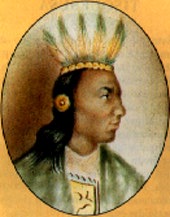Africa
- Adal Sultanate – Muhammad ibn Badlay (1445–1471)
- Benin Empire – Ewuare the Great, Oba of Benin (1440–1473)
- Bornu Empire – Ali Gazi, King of the Bornu Empire (1465–1497)
- Ethiopian Empire – Zara Yaqob (1434–1468)
- Jolof Empire - Birayma N'dyeme Eter, Buur-ba Jolof ("Emperor") of the Jolof Empire (1465–1481)
- Kingdom of Kongo – Nkuwu a Ntinu (1450–1470)
- Mali Empire – Uli II (1460–1481)
- Kingdom of Mutapa – Matope Nyanhehwe Nebedza (1450–1480)
- Kingdom of Rwanda - Yuhi wa II Gahima II (1444-1477)
- Songhai Empire – Sonni Ali (1464-1492)

The Adal Sultanate, or Kingdom of Adal, was a Muslim Somali kingdom and sultanate located in the Horn of Africa. It was founded by Sabr ad-Din II after the fall of the Sultanate of Ifat. The kingdom flourished from around 1415 to 1577. The sultanate and state were established by the local inhabitants of Zeila. At its height, the polity controlled most of the territory in the Horn region immediately east of the Ethiopian Empire (Abyssinia). The Adal Empire maintained a robust commercial and political relationship with the Ottoman Empire.
Muhammad ibn Badlay was a Somali Sultan of the Sultanate of Adal. He was the son of Badlay ibn Sa'ad ad-Din.

Oba Ewuare was the king of the Benin Empire from 1440 until 1473. Ewuare became king in a violent coup against his brother Uwaifiokun which destroyed much of Benin City. After the war, Ewuare rebuilt much of the city of Benin, reformed political structures in the kingdom, greatly expanded the territory of the kingdom, and fostered the arts and festivals. He left a significant legacy and is often considered the first King of the Benin Empire.








